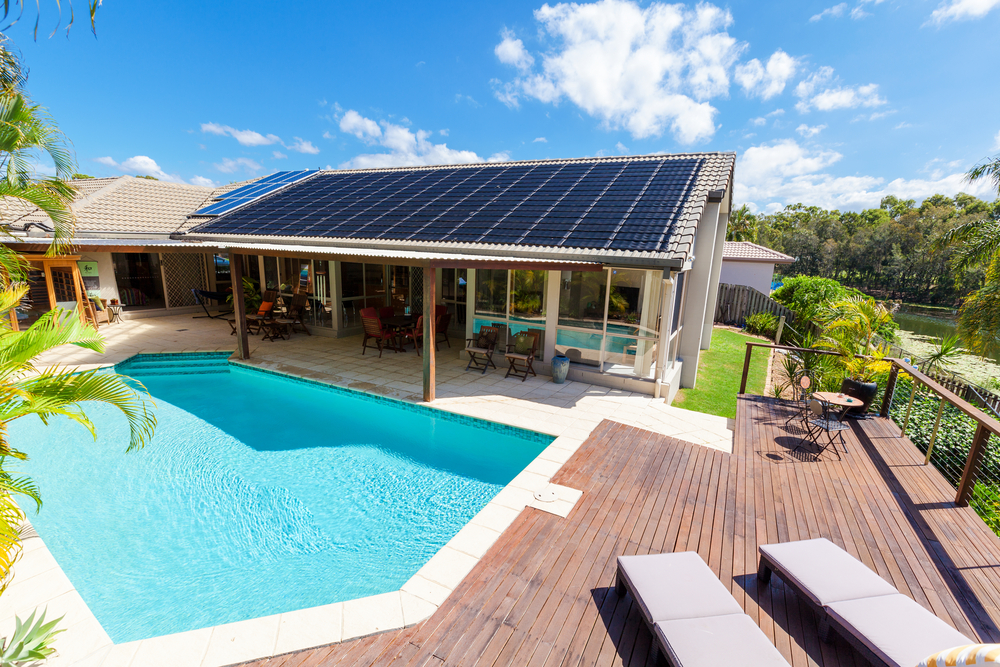You might be surprised to learn that it isn’t difficult to reduce the costs of energy in your home. That’s right. You don’t need to pay a small fortune to your utility companies each month. By making a few simple changes to your home and lifestyle, you can reduce your energy costs and the amount of energy your family consumes — which reduces your carbon footprint. Check out these tips to learn how to reduce your energy costs and make your home an environmentally friendly place.
Install Solar Panels
Converting your house so that it’s solar-powered is easier than you probably think. All you need to do is have solar panels installed on your roof. Then, the panels harvest energy from the sun’s rays and use that energy to run the electric in your house. Solar panels have to be professionally installed, but they can help save you money month after month. So if you really want to save money on energy costs and reduce your family’s carbon footprint, read some of the ION Solar reviews to learn more about the benefits of switching to solar power.
Upgrade Your Roof
If you have a cheap, low-quality roof, chances are, heat and cold air are escaping your home through the roof. This means, your furnace and air conditioner have to work extra hard to keep your home at a bearable temperature, which uses more energy and costs you more money.
To maximize your savings, consider upgrading to a green roof. Green roofs are specifically designed to prevent the excessive use of energy. They are insulated to prevent hot and cold air from escaping your home, and because they are more efficient than a traditional roof, they end up saving you quite a bit of money in the long run and are better for the environment.
Install a Programmable Thermostat
Installing a programmable thermostat is an easy way to reduce your energy costs and consumption. Once the thermostat is installed, you simply program it so your furnace and air conditioner run more while you’re at home and only when necessary during hours you’re normally away from home. Using a programmable thermostat automates the temperature-adjusting process so you don’t need to continually remember to alter it manually.
According to the US Department of Energy, turning your thermostat back between seven and eight degrees for eight hours each day saves you up to 10 percent on your heating and cooling costs. In the winter, it’s recommended that you set the thermostat to 69 degrees Fahrenheit while you’re awake and lower it a bit while you’re asleep.
Run the Air Conditioner Sparingly
When it’s hot outside, use electric fans to help cool your home. This way, you don’t need to set the thermostat as low for your air conditioner. When the air conditioner runs less, it uses less energy, therefore, reducing your energy costs.
If you use window air conditioners to cool your home, make sure you close off the space you’re cooling so the air conditioner doesn’t need to work as hard to cool the room. For example, if you use a window air conditioner in your bedroom, shut the bedroom door when it’s running. You can use the same process in the cooler months using space heaters.
Find and Fix Leaks
The last thing you want is the cool or hot air leaving your home. So you need to find and fix any leaks as quickly as possible. To find leaks around doors and windows, light a candle and slowly move it around the perimeter of the window or door to see if the flame flickers. If it does, air is moving through the space and you have a leak to fix. Also, to keep the heat in your home during the winter, place towels across the bottom of your door frames and cover your windows with plastic.
By upgrading a few things around your house, paying close attention to the amount of electricity you use, and making necessary home repairs as soon as possible, it’s easy to save money on your monthly utility costs. Plus, it’s an added bonus that you’re doing your part to help protect the environment.

